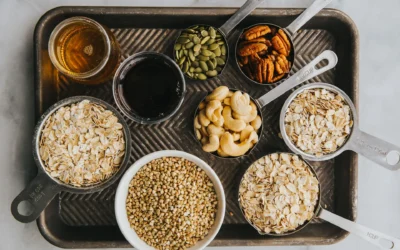Long before tea became the second most popular drink around the world, it was considered a medicinal drink. Health practitioners used a variety of herbs to make teas that helped heal the body and boost its functioning.
With time, it became a popular beverage, but with the knowledge of the restorative properties of herbs becoming widespread, healing teas are gaining attention once again. They are called ‘functional teas’ and refer to customized herbal blends prepared to help with specific health issues and offer wellness benefits.
There are functional teas for a wide range of health issues, from reducing inflammation to boosting immunity, improving digestion to treating sleeplessness, and energizing teas to relaxing blends. These herbal blends and the benefits they offer give you a better idea.
Functional Teas For The Heart
Black and green tea are long known for their benefits to the heart. They are rich in flavonoids, which help reduce inflammation, lower cholesterol levels, and improve blood vessel functioning.
Functional teas for the heart combine black or green tea with some other heart-healthy herbs and nutrients to prepare more potent blends to help keep your heart healthy. Green tea helps lower triglycerides and LDL levels in the blood improve the functioning of endothelial cells that line the blood vessels and prevents plaque buildup in the arteries.
It’s often combined with Vitamin B1. Also called thiamine, vitamin B1 helps reduce the risk of heart disease by enhancing circulation and initiating the production of acetylcholine in the body. Acetylcholine plays a vital role in maintaining the heart’s rhythm and function.
Forest fruits are also commonly used in functional teas made for the heart due to their high antioxidant content. These help fight against free radicals in the body, reduce blood pressure, and lower your risk of heart disease.
Making Houseplants Healthy
One important component is choosing the right size container as plants grow and take up more space. You need to know how big your plant will grow and buy a pot at least 4 inches bigger. A bigger pot will give the soil more room to breathe.
Another important factor to consider with plant health is exposing them to the right amount of sunlight as not all plants love the sun. Direct sunlight can burn your plant leaves and dry out the soil. Place your plants in the sun for a few hours and then shade them from the intense heat.
Overwatering and underwatering are always a problem with beginners which is why it’s important to water properly. Do the ‘soil finger test’ to find out if your plant needs water or sunlight.
Insert your finger up to the second knuckle into the soil and feel its texture. If your finger comes out wet, the soil needs draining and sunlight. If it comes out clean, water your plant.
Making Leaves Shine
You might have heard about the popular remedy of buffing your plant leaves with mayonnaise to make them shine. However, we are completely against it because this condiment not only blocks leaf pores but also attracts dust. These are a couple of alternative methods to best suit your plant needs.
You can use a damp cloth by dipping a small piece of cloth in water and squeeze it to wring out the excess. Hold a leaf in the palm of your hands and wipe it gently with a moist cloth. Repeat on both sides, and then place the pot on your windowsill.
If dirt is caked on the leaves, just water might not clean them using some soap water. You can add a drop or two of mild liquid dish soap to the water and then use the same technique to wipe the leaves with a cloth. Remove the leaves with clean water at the end to remove any soap residue.
Try these tips, and you will see your plants dancing in the sunlight after a few days. These are some of the easiest options to maintain the health of your plants and are recommended to try before considering buying expensive fertilizer if you don’t need it.



